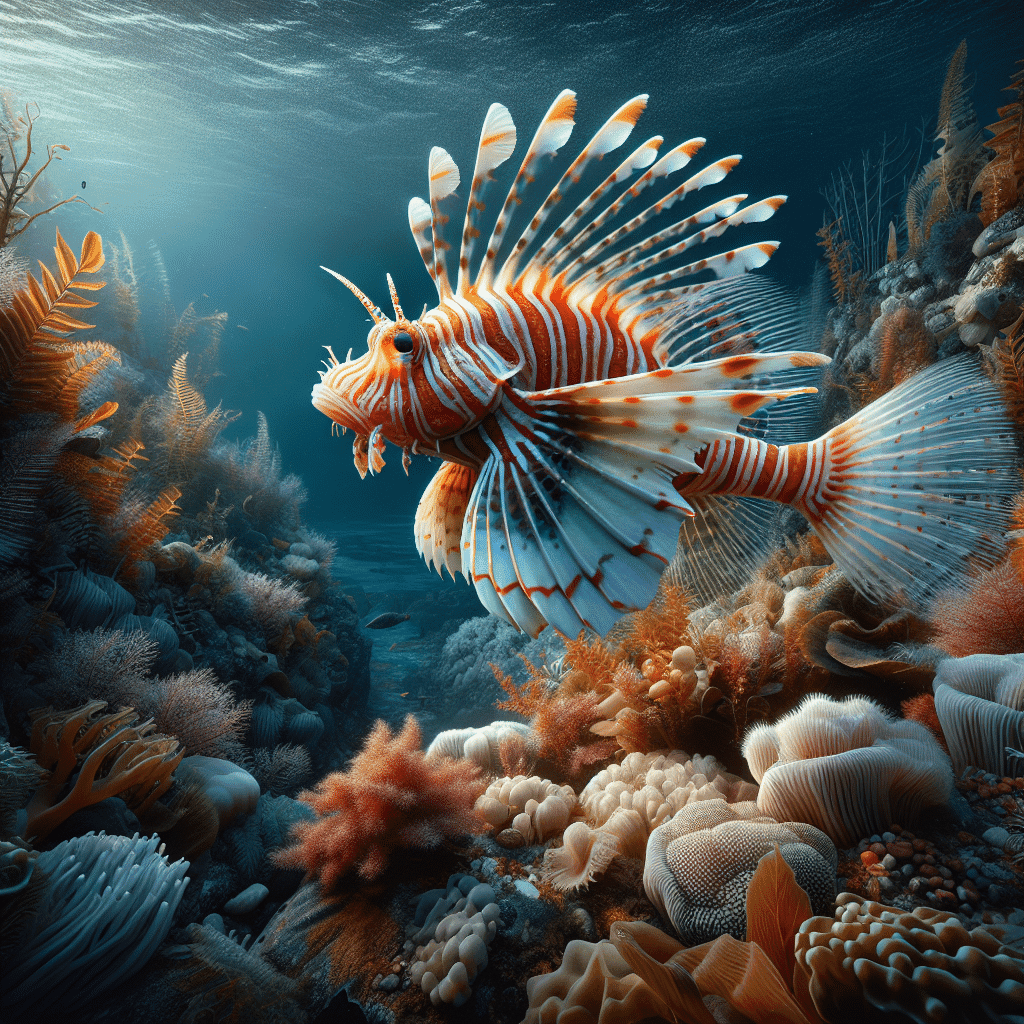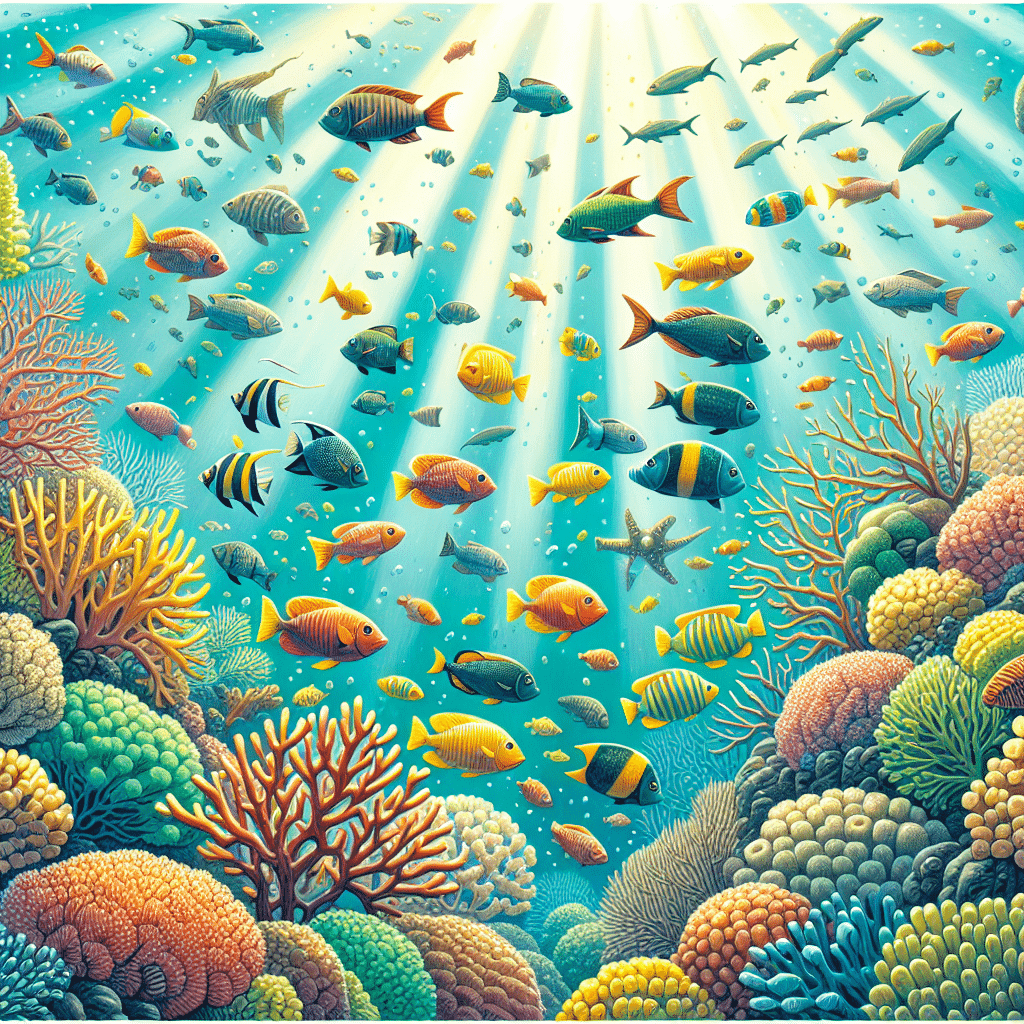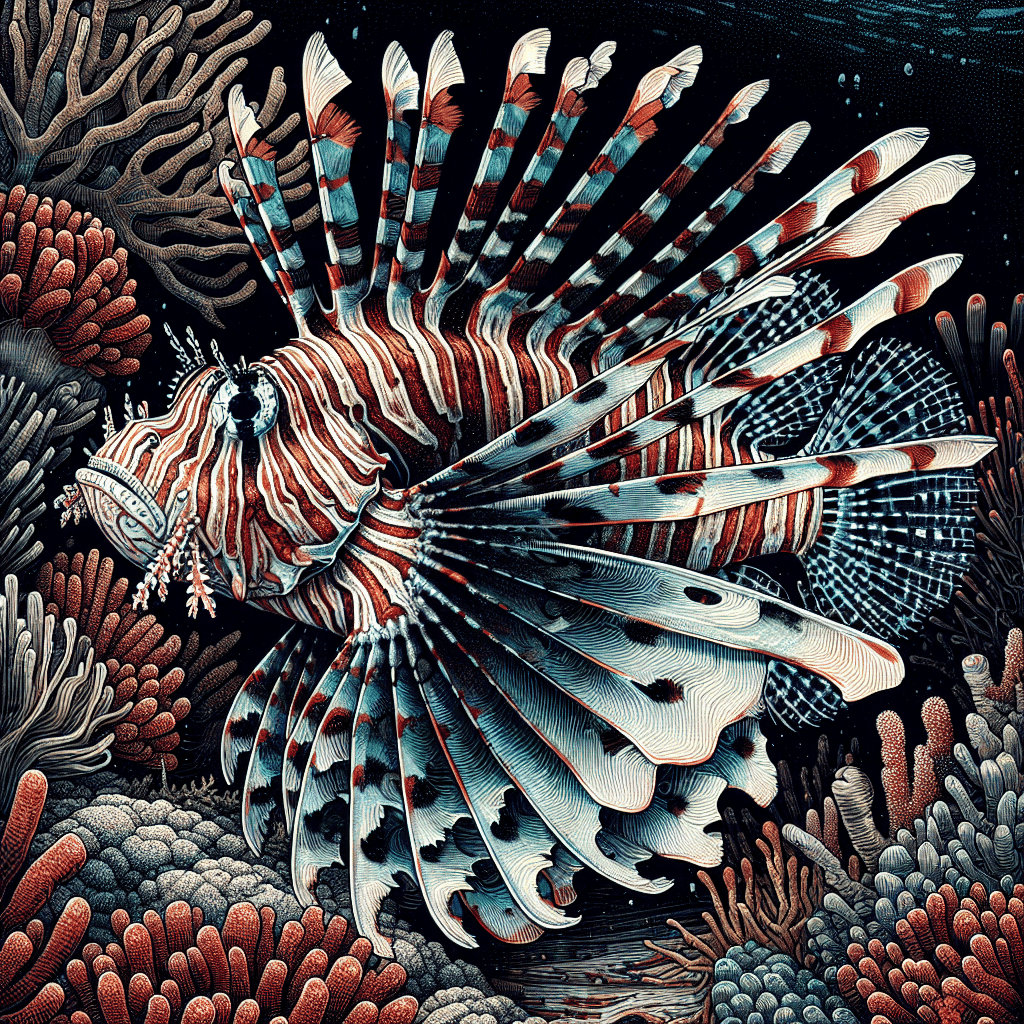Introduction to Firefish Gobies
Firefish Goby Overview
I find the Firefish Goby, scientifically known as Nemateleotris magnifica, to be a fascinating addition to any reef tank. This vibrant little fish is often referred to as the Magnificent Dartfish and typically grows up to 3 inches in size, with a life expectancy of around 3 years (The Spruce Pets). Its body features a beautiful gradient of colors, usually transitioning from white to deep red, making it a visually striking inhabitant of aquariums (FantaSEA Aquariums).
These gobies are known for their peaceful nature and can be a great choice for community tanks. They typically inhabit shallow waters, adding a dynamic element to the tank with their darting movements and tendency to stay close to the substrate.
Native Habitat of Firefish Gobies
Firefish Gobies are native to the warm waters of the Indian and Pacific Oceans. Their range extends from the eastern coast of Africa all the way to the Hawaiian Islands, and they can also be found in the Austral Islands and north to the Ryukyu Islands in Japan (The Spruce Pets).
In the wild, these fish are typically found in groups near coral reefs, where they feed on planktonic food. They prefer shallow outcrops at depths ranging from six to ten meters but can sometimes be found as deep as seventy meters (230 feet) (Private-Scuba). Their natural habitat plays a significant role in their behavior and care requirements in captivity, so it’s essential to replicate their environment as closely as possible in your aquarium setup.
If you’re looking to dive deeper into the marine world, you might also want to check out other fascinating species like clownfish or goby fish.
Physical Characteristics of Firefish Gobies
Coloration and Markings
The Firefish Goby, or Nemateleotris magnifica, has a striking and distinctive appearance that makes it a favorite among aquarium enthusiasts. It sports a bright yellow face that transitions into a white front half and a vibrant red-orange rear half. This coloration not only adds a pop of color to any reef tank but also helps it blend into its natural coral habitat.
The fins of the Firefish Goby are equally impressive, featuring black highlights on the dorsal, anal, and caudal fins. These fins are elongated and can be quite stunning as they flick back and forth, potentially serving as signaling devices to communicate with other fish. Adult Firefish Gobies typically reach a maximum length of around nine centimeters (or 3.5 inches) (The Spruce Pets).
| Attribute | Description |
|---|---|
| Head Color | Bright yellow |
| Body Color | White front half to red-orange rear half |
| Fin Color | Black highlights |
| Maximum Length | 9 cm (3.5 inches) |
Unique Features of Firefish Gobies
Firefish Gobies have some unique physical characteristics that set them apart from other fish species. One notable feature is the elongated first spine in their dorsal fin, which acts as both a signaling device and a “locking device.” This adaptation allows them to secure themselves in crevices for protection from predators, making them generally timid creatures that prefer to hide in sand burrows when threatened (Private Scuba).
The long dorsal fins are not just for aesthetics; they may also serve as a defense mechanism or an alert system for their tank mates when danger is near. This behavior reflects their social nature, as they often live in pairs as monogamous adults (Private-Scuba).
In summary, the vibrant coloration, elongated fins, and unique adaptations of Firefish Gobies make them fascinating additions to any reef tank. If you’re looking to enhance your aquarium with stunning marine life, the Firefish Goby is definitely worth considering. For more information on other marine fish, check out our guide on marine fish.
Care and Tank Requirements
Taking care of firefish gobies is an enjoyable experience, but it requires some specific tank setups and conditions to ensure they thrive. Here’s what I’ve learned about their tank size and ideal conditions.
Tank Size and Setup
When it comes to keeping firefish, a minimum tank size of 20 gallons is essential. These fish are quite active and need enough space to show off their darting behavior. Additionally, it’s important to create a comfortable environment for them. I like to include plenty of hides, caves, and low-light spots in the tank. This setup helps them feel secure and reduces their stress levels. Here’s a quick overview:
| Requirement | Details |
|---|---|
| Minimum Tank Size | 20 gallons |
| Essential Features | Hides, caves, low lighting |
| Tank Security | Well-secured lid to prevent jumping |
Firefish gobies are known for their timid nature, so having a tightly fitting lid is crucial to prevent them from jumping out of the aquarium.
Ideal Tank Conditions for Firefish Gobies
In terms of water conditions, firefish gobies prefer low to moderate lighting. They thrive in environments that mimic their natural habitat, which means providing plenty of hiding spots is key. The substrate should not be too rough, as this can damage their delicate fins and body.
Firefish gobies are fantastic candidates for peaceful reef aquariums. They don’t bother other tankmates or corals, making them near-perfect reef tank fish. However, they can be territorial towards their own species, so it’s best to avoid overcrowding in smaller tanks. Here’s a summary of ideal conditions:
| Condition | Ideal Level |
|---|---|
| Lighting | Low to moderate |
| Substrate | Smooth, not rough |
| Compatibility | Peaceful tankmates |
By ensuring these tank conditions and features, firefish gobies can thrive and display their beautiful, active nature in your reef tank. If you’re interested in more information about marine fish, check out our section on marine fish.
Behavior and Social Interactions
Peaceful Nature of Firefish Gobies
I’ve found that firefish gobies are some of the most peaceful fish I can keep in my reef tank. They get along well with other tank inhabitants, which makes them a great addition to a communal aquarium. They don’t bother their tankmates or corals, allowing everyone to coexist harmoniously. This peaceful demeanor means that firefish gobies can encourage shyer fish to be more active, creating a lively underwater environment. If you’re looking for friendly marine fish, firefish gobies are definitely worth considering.
Territorial Behavior and Group Dynamics
While firefish gobies are generally peaceful, they can become quite territorial, particularly in smaller tanks. If I have multiple firefish gobies in one aquarium, I’ve noticed that they can show aggression towards each other. This territoriality is especially pronounced when they feel crowded or if there are other firefish gobies present. For this reason, it’s crucial to provide ample space in the tank if I want to keep more than one.
To maintain a peaceful environment, I’ve learned that having a larger aquarium helps mitigate territorial disputes. If I’m considering adding more than one firefish goby, I ensure my tank is spacious enough to allow each fish its own territory. This way, they can thrive without constant stress or conflict. Firefish gobies are truly fascinating to observe as they establish their territories and interact with one another, making them a dynamic addition to any reef tank.
For more information on keeping a variety of marine fish together, check out our guide on marine fish.
Feeding Habits of Firefish Gobies
Dietary Needs of Firefish Gobies
Firefish gobies are omnivores, which means they enjoy a varied diet. In their natural habitat, they primarily feed on planktonic organisms, including algae, zooplankton, and sea worms. In an aquarium setting, it’s crucial to replicate this diet to keep them healthy and happy. I typically feed my firefish gobies a mix of live or frozen foods such as brine shrimp and mysis shrimp, along with commercial fish foods that are rich in nutrients.
Here’s a quick overview of their dietary needs:
| Food Type | Examples |
|---|---|
| Meaty Foods | Mysis shrimp, brine shrimp, fresh or frozen seafood |
| Plant-based Foods | Algae, spirulina, or specialized veggie pellets |
| Commercial Foods | Vitamin-enriched prepared fish foods |
It’s important to ensure that my firefish gobies receive enough food, as they are not the most aggressive feeders and can easily be outcompeted during feeding time. For more information on various types of marine fish, check out our section on marine fish.
Feeding Schedule and Recommendations
To keep my firefish gobies thriving, I feed them at least 2-3 times a day. This frequency helps ensure they get adequate nutrition and energy. When feeding, I often scatter the food across the tank to mimic natural foraging behavior, allowing them to explore and engage with their food.
Here’s a simple feeding schedule I might follow:
| Feeding Time | Food Type | Quantity |
|---|---|---|
| Morning | Mysis shrimp | A small pinch |
| Afternoon | Brine shrimp | A small pinch |
| Evening | Commercial fish food | 1-2 pellets |
In addition to providing a balanced diet, I make sure to include a variety of foods to keep things interesting for my fish. If you’re curious about specific products that work well for firefish gobies, explore our article on hair straightening products for curly hair.
By maintaining a consistent feeding schedule and offering a diverse diet, I help ensure that my firefish gobies stay healthy and vibrant in their reef tank.
Reproduction and Mating Behavior
Reproductive Characteristics
When it comes to reproduction, firefish gobies (scientifically known as Nemateleotris magnifica) have some fascinating traits. These little guys can grow up to about 9 centimeters (3.5 inches) in length. During the spawning period, males and females share a burrow for shelter, which is pretty sweet if you ask me. The female can lay up to 5,000 eggs! These eggs attach to vegetation such as coral and other substrate in the tank.
| Characteristic | Details |
|---|---|
| Maximum Length | 9 cm (3.5 inches) |
| Egg Count | Up to 5,000 eggs |
| Lifespan | Up to 10 years |
The male takes on the role of guardian, watching over the eggs until they hatch into colorless larvae. The larvae are quite delicate and will take a few months to mature into adults.
Mating Habits of Firefish Gobies
Mating usually happens in the safety of their burrow, where both partners feel secure. The flicking of their long dorsal fins may serve as a form of communication, signaling readiness to mate or alerting each other to any potential dangers. This behavior not only strengthens their bond but also adds a layer of safety during the vulnerable spawning process.
After the eggs are laid, it’s all hands on deck for the male as he protects the eggs from potential threats, ensuring that as many as possible hatch safely. This dedication is crucial since the tiny larvae need a safe environment to develop before they can navigate the larger world of the aquarium.
For anyone interested in adding firefish to a reef tank, understanding their reproductive habits can help in creating the optimal environment for breeding. It’s essential to have plenty of places for them to hide and feel secure, as this will encourage natural behaviors and help them thrive. If you want to learn more about different types of fish and their compatibility, check out our section on marine fish.
Compatibility in Reef Aquariums
Interactions with Tankmates
I find that Firefish Gobies are nearly ideal for reef tanks. They are known for their peaceful nature towards other fish and corals, making them a great addition to a community setup. Firefish Gobies don’t usually bother their tankmates, which allows for a harmonious environment. They can even encourage more timid fish to become active, creating a lively and engaging tank atmosphere. For the best results, I recommend housing them with other peaceful species, such as clownfish, wrasse, and royal gramma.
Here’s a quick compatibility chart for Firefish Gobies:
| Tankmate | Compatibility |
|---|---|
| Clownfish | High |
| Wrasse | High |
| Royal Gramma | High |
| Lionfish | Low |
| Triggerfish | Low |
| Grouper | Low |
Challenges of Keeping Multiple Firefish Gobies
While Firefish Gobies are generally peaceful, they can become territorial, especially when it comes to their own kind. If I try to keep multiple Firefish Gobies in a smaller aquarium, it can lead to conflicts and stress among them. To reduce the chances of aggression, I find it best to have a spacious tank if I want to keep more than one. Large aquariums provide enough space for each fish to establish its own territory.
If you’re considering adding more Firefish Gobies, aim for a tank that is at least 50 gallons. This provides plenty of room for them to swim and claim their own spots without feeling crowded. In summary, keeping multiple Firefish Gobies can be challenging in smaller setups, but with the right tank size and setup, it can be a rewarding experience.
For more information on compatible marine fish, check out our section on marine fish to explore additional options that would thrive alongside Firefish Gobies in your reef aquarium.
Conservation and Threats
Predators of Firefish Gobies
Firefish gobies, particularly the Red Fire Goby, have managed to evade many natural predators thanks to their unique burrowing behavior. This instinct allows them to hide in crevices and sand, providing a safe refuge from potential threats. However, they are not entirely free from danger. Larger predatory fish species and wading birds pose a threat to these little gobies. It’s important to remember that in the wild, their survival often hinges on their ability to stay hidden and avoid being spotted.
| Predator Type | Examples |
|---|---|
| Larger Fish | Lionfish, Grouper |
| Birds | Wading birds |
Conservation Status and Threats to Firefish Gobies
The conservation status of the Red Fire Goby is classified as ‘Least Concern’ (LC) by the International Union for Conservation of Nature (IUCN) (Private Scuba). This means that, currently, there are no immediate threats to their population levels. However, like many marine species, they could be affected by habitat degradation and changes in water quality due to pollution and climate change.
For those of us keeping firefish in our aquariums, it’s crucial to maintain a healthy environment that mimics their natural habitat. This not only ensures the wellbeing of our fish but also contributes to the overall health of marine ecosystems. If you’re interested in learning more about compatible fish for your tank, check out our section on marine fish for some great options.



